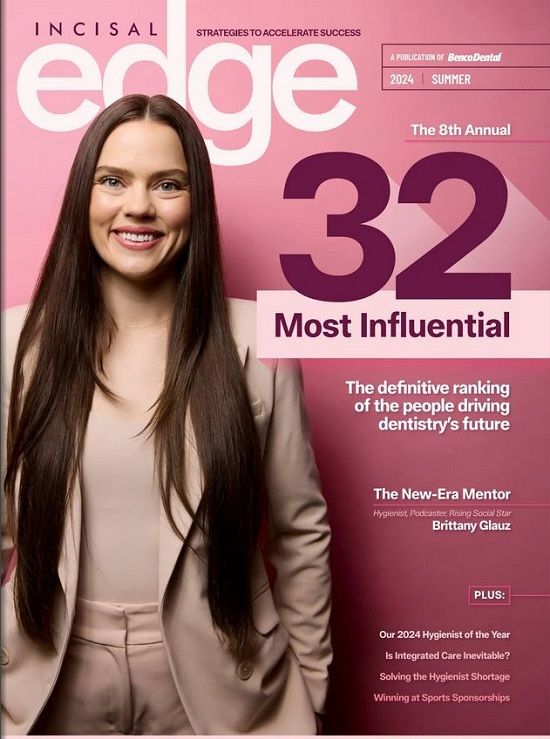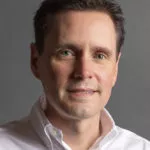Labs have a lot in common with the practices they serve, from going digital to managing family successions. No one knows that better than Matt Weigand, CDT, who’s transforming Utica Dental Lab into a national player.
MATT WEIGAND, CDT is looking for a quiet place to talk—except there aren’t any at Utica Dental Laboratory. When Incisal Edge suggests he head to his office to take our call, he laughs. “I don’t have an office. I did, but we needed the space, so I had to give it up.” Hard to believe that just a few years ago, this reinvigorated business where Weigand (above right) has worked since he was 17 was struggling to find a sustainable path for growth in a changing market.
What saved it? A tech transformation, for one, but also a national marketing push, plus Weigand’s aggressive expansion plans and the relentless work ethic that sees him begin around 4 A.M. and keep pushing until well after sundown. Just 38, he’s now the company’s president and third-generation owner. We caught up with him to talk about building the business to serve dentists in all 50 states and approaching $5 million in annual revenue.
When did you join Utica Dental Laboratory, and how has it changed over time?
I started part-time in high school in 2003. I always wanted to go away to college, but my dad needed help, so I did a little of everything: mopping floors, billing, invoicing, talking to doctors, delivering cases, you name it. This is my twentieth year already, and change is a constant. Doctors come and go as they sell or re-tire, workflows come and go, technology advances. It’s interesting, but it’s also a tough business for sure.
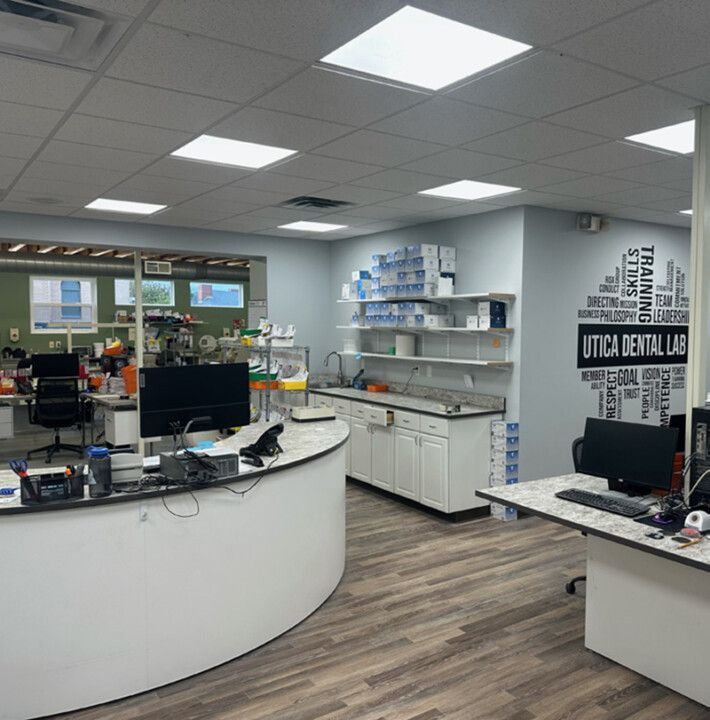
By around 2013, there just wasn’t enough local business to support us. We were doing lots of dentures and partials. It wasn’t sustainable in terms of delivering sufficient profit for the company, let alone making enough money to hire great people and give them good careers with a 401(k) and solid benefits. We were going week by week, barely making payroll. That’s very humbling.
Did you ever consider selling the business or shutting it down?
No, never. I was confident in my ability to put out a great product. That supersedes a lot of things. I spent two decades learning everything about the business and learning to make things by hand. That gave me a strong firsthand basis for digitizing our workflows smartly.
What did you do to start turning things around?
Besides buying all the new equipment, we also had to buy a new building to accommodate it. That basically brought our bank account down to zero. It’s scary, but the upside is it really makes you home in on things, focus and work even harder. I did that for five or six years, working from 4 A.M. till 10 P.M. or later, plus weekends. Every owner has been through it. It’s about how you respond. I know it’s a cliché, but you get knocked down, you get back up and you keep trying. If you can’t handle that, you’re not going to build a successful business.
Did the fact that you’re in a smaller town with presumably lower costs of doing business help financially?
New York is not especially business-friendly, and maybe even less so for small businesses. Taxes are high. In small towns like Utica, we don’t have a big pool of skilled workers to draw from. Honestly, family is what keeps me here. Don’t get me wrong: I like it, it’s a quiet place to raise a family. Would it be smarter to move the business to, say, the Carolinas? Probably, but I feel that sense of obligation to my family and to our employees.
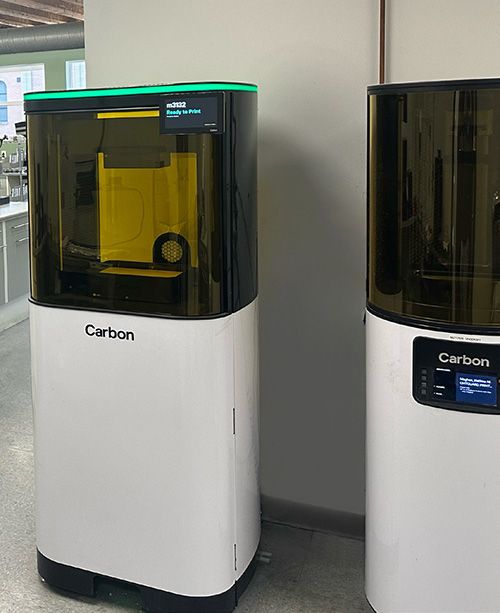
We got more aggressive with our marketing. We just started UDL Connect, a partnership with iTero that allows our customers to get scanners with no start-up fees or upfront investment, plus free training and other benefits like free shipping on return cases. We work with several specialist marketing firms—in Wisconsin, California and overseas—each with dif-ferent capabilities. Together, it’s all working. It’s not all search or digital that’s delivering results, either. We did a print mailing with Dentaltown that netted 200 new doctors. Our business used to be mostly local, and now it’s overwhelmingly national.
How much does efficiency play a role in your growth?
An enormous amount. To cite just one example, our metal printers were a huge investment, but also a game changer: They took us from 25 steps for one partial down to two. Remember, though, it’s not just about producing more products faster, but also de-livering a more consistent, higher-quality product. Quality is not an area where we can ever compro-mise. It’s one of the biggest business drivers for labs.
“Quality is not an area where we can ever compromise. It’s one of the biggest business drivers for labs.”
—MATT WEIGAND, CDT
Along those lines, how do you see automation affecting your business over the next, say, 20 years?
The labor pool is so small here, we can’t just cross our fingers and hope we’ll have people to hire when we need them. Our situation is unique in that way. We’re not trying to replace people—we’re trying to expand, and the only way to do that is by investing in technology and automation. I can’t envision labs ever operating strictly with robotics and machines. However, I can picture labs someday putting out the same capacity, with equal or better quality, with 75 to 80 percent less staff.
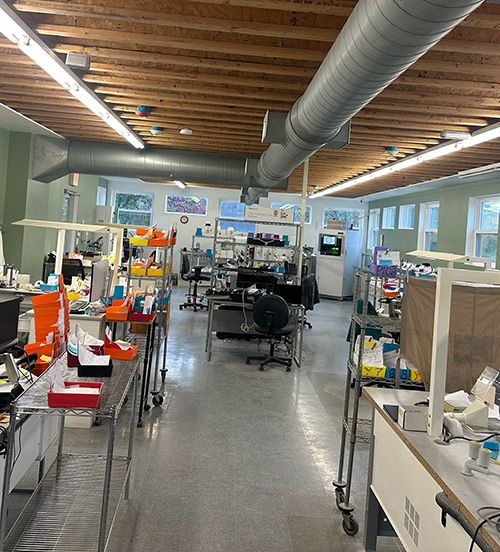
Twenty years is a long time, and working together every day, there were periods when our relationship could become strained. He was always more of a craftsman, and I’m more of a businessman even though I’m also a tech. He’ll make you the best partial you’ve ever seen, but it’ll take him six hours. He’d be first to admit that. Eventually, though, I think we all realize there’s a time to step back. Luckily, he was concerned with our legacy and ensuring that the business would advance to the next level and thrive. So especially in later years, I didn’t really get much pushback from him as I took on more responsibility and eventually bought it. He still comes in, works a little here and there, and I’m grateful for that.
What opportunities do you see for labs going forward?
Crowns are commoditized—they’re going to be done mostly chairside, espe-cially as materials continue to improve. Where labs will provide significant value is in areas like implant restoration, All-on-4, hybrid zirconia, products like those. But relationships are very important, just like they are between den-tists and patients. We’ve always been great at building those lasting relation-ships. I’m excited for the future, and nervous about it too, but if I wasn’t then I shouldn’t be in the business. Really, this is an art. You have to love it, and we do.
